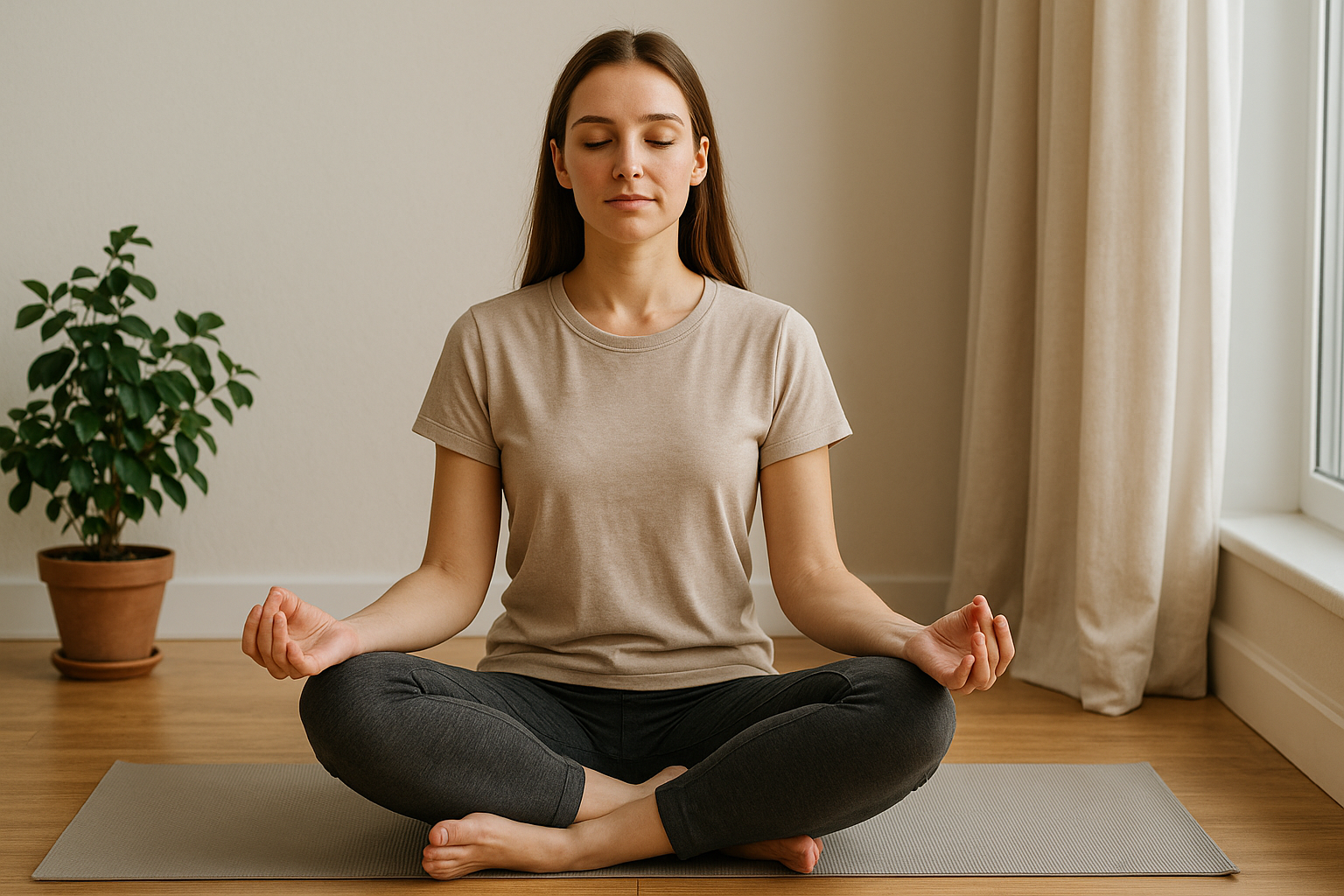In today’s fast-paced world, carving out time for mindfulness can feel impossible. Yet even a brief daily meditation practice can significantly reduce stress and enhance well‑being. This meditation for beginners guide will walk you through a simple, five‑minute routine you can integrate into any part of your day—no special equipment or prior experience required.
Why a 5-Minute Practice Works
Accessibility and Consistency
Short sessions overcome common barriers: lack of time and fear of “doing it wrong.” A five‑minute commitment feels manageable, helping you build the habit of mindfulness practice without stress or guilt.
Quick Reset for Your Mind
Even a few minutes of focused breathing activates your parasympathetic system, lowering cortisol levels and promoting calm. These micro‑breaks can interrupt negative thought loops, sharpen focus, and restore emotional balance.
Preparing for Your Meditation
Choose a Quiet Spot
- Find a comfortable, distraction‑free corner—your desk, a cushion on the floor, or a chair near a window.
- Silence notifications and let household members know you need a brief pause.
Set a Gentle Timer
Use your phone or a simple kitchen timer. Opt for a gentle chime or bell sound to avoid jarring you out of the practice.
The 5-Minute Meditation Routine
Minute 1: Grounding and Posture
Sit with a straight spine, shoulders relaxed. Rest your hands comfortably—palms down on your thighs or palms up in your lap. Close your eyes or soften your gaze toward the floor.
Minute 2: Focus on the Breath
Bring attention to the natural rhythm of inhalation and exhalation. Notice the cool air entering your nostrils and the warm air as you exhale. No need to change your breathing—simply observe.
Minute 3: Body Scan
Shift your awareness through the body, starting at the crown of your head down to your toes. Acknowledge any tension—jaw, shoulders, lower back—then release it with each out‑breath.
Minute 4: Noting Thoughts and Emotions
As thoughts or feelings arise—worries, plans, distractions—label them gently (“thinking,” “planning,” “worrying”) and let them drift away like clouds. Return to the anchor of your breath without judgment.
Minute 5: Cultivating Gratitude
Spend the final minute reflecting on one thing you’re grateful for—big or small. This brief positive focus helps shift neural pathways toward resilience and joy.
Tips for Success
Anchor to an Existing Routine
Pair your five‑minute meditation with another daily habit—after brushing teeth, with your morning coffee, or before logging off work. This cue‑action pairing strengthens adherence.
Be Patient and Non‑Judgmental
Some sessions will feel easier than others. Resist the urge to evaluate your “performance.” Over time, consistency matters more than any single session’s quality.
Track Your Progress
- Use a simple habit‑tracking app or journal to note each day’s practice.
- Celebrate milestones—one week, two weeks, one month of uninterrupted practice.
Extending Your Practice
Once you’re comfortable with five minutes, consider adding a minute or two each month. Alternatively, explore guided meditations—apps like Headspace or Calm offer beginner‑friendly sessions that build on your foundation.
Conclusion
Incorporating a five‑minute daily meditation into your life is one of the most efficient ways to reduce stress and cultivate mental clarity. By following this simple routine—grounding, breath focus, body scan, noting, and gratitude—you establish a sustainable mindfulness practice that pays dividends in calm, resilience, and overall well‑being. Ready to begin? Set your timer and take the first step toward a calmer day.
